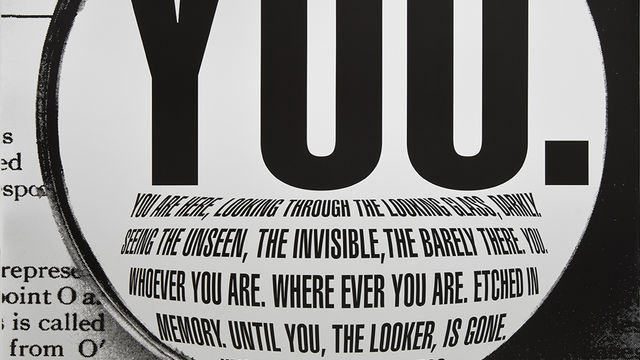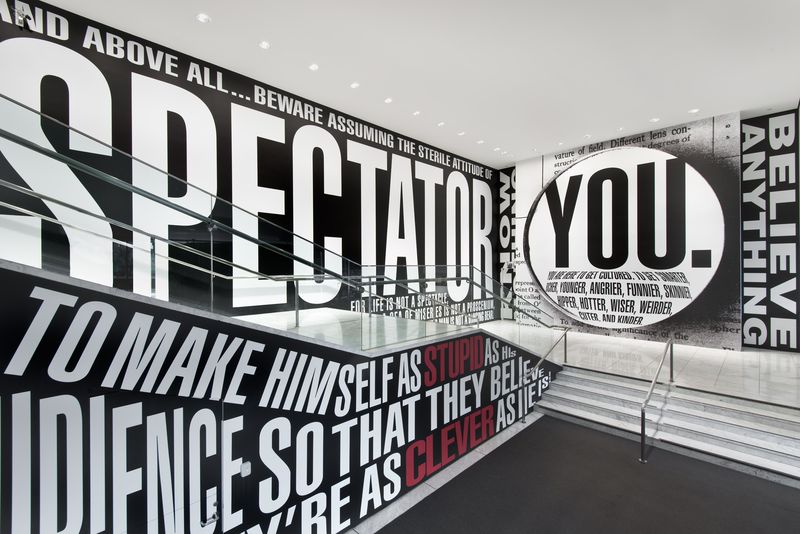
Barbara Kruger
Employing montage tactics to bring together found images and laconic texts, Barbara Kruger tackles the stereotypes and clichés shaping everyday life. Kruger first worked as a designer and editor for magazines, and in the late 1970s she began applying her graphic skills to create insightful and eye-catching photo-text collages. Like many of her fellow "Pictures" artists, she targeted the dictates of consumerism, patriarchal power, mass media, and high art, the very sites from which she pilfered images, texts, and ideas.# For example, she positioned the text "Your body is a battleground" over a head shot of a beautiful female model and superimposed "We don't need another hero" on an image of the classic children's book characters Dick and Jane in which Dick flexes his arm for an admiring Jane. Such iconic works couple, as Kruger puts it, "the ingratiation of wishful thinking with the criticality of knowing better."#
Kruger's signature red, white, and black graphic works have populated magazines, newspapers, art museums, billboards, train stations, and an array of other public spaces to interrogate representation, power, and social exchange. In 1990 she began to create site-specific installations by directing the methods she employs within the space of the picture plane to three dimensions. In addition to adhering her signature imagery to specific architectural sites, Kruger has produced installations that employ video, often projecting multiple channels and heightening the capacity for the work to speak directly to the viewer. In her work for the Hammer Museum, she used the lobby's architectural features and covered both walls and floors, juxtaposing, superimposing, and interposing her imagery to create an immersive and pulsating environment. Kruger has described "the museum as a medium, as a way of reaching people, of reaching spectators," and her barrages of words and colors confront visitors somatically as they traverse the activated space and react to its novel appeals.#

In a recent installation at the Kunsthaus Bregenz in Austria, Kruger used knockoffs of her own work that she discovered on the Internet. In a circuit of cultural appropriations, art students, designers, and others have appropriated her iconic style and mass-cultural appropriations to create their own images, which the artist then appropriated and integrated into her installation. According to Kruger, cultural productions "engage the choreographies of social relations, the hybridity of bodies, the relational possibilities of objects and events, the invasive constancy of surveillance, the intensive orderings of design, and the punishments and pleasures of the built environment."# Perhaps no work better enacts these operations and reveals the radical limits and prospects of artistic intervention than her recent installations and reappropriations in the public spaces of museums.
—Ruth Erickson


